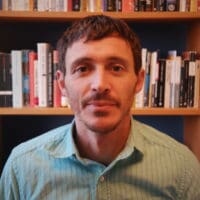Francisco Varela believed that the present moment of experience coincided with transient patterns of synchronous oscillations between different neuronal populations. Our findings suggest that these transient patterns of synchronous oscillations throughout the brain are modulated by breathing (e.g., breathing as an organizing principle for neuronal oscillations). While current neuroscientific methods of brain stimulation are limited, we proposed the use of deep-slow-breathing (DSB) to naturally modulate brain oscillations. Subjects will be epileptic patients trained to perform DSB under a state of effortless relaxation. We will determine the synchrony between the breathing and the intracranial-EEG from electrodes implanted in cortical and deep structures. We predict that brain areas that typically synchronize their activities to the breathing during automatic-breathing discontinue this synchronization during DSB. As subjects learn the mind-body connection (e.g., letting the body dictate how/when to breath), the attenuation of respiration-rhythms in the brain may be complemented by an enhanced synchrony within specific (insular and cingulate) circuits. The proposed research details mechanisms of how cognitive factors (“interoceptive attention to breath”) impact otherwise-automatic neuronal processes. Moreover, given that patients are already in pain following surgery, we will examine the effect of DSB on pain and predict pain ratings based on neuronal synchrony.

Jose Herrero, PhD
Northwell Health – Feinstein Institute for Medical Research (NY)
Grantee
Jose Herrero trained in electrophysiology in the UK, under the umbrella of Dr. Alex Thiele, studying the neural and cellular substrates underlying the focus of attention to external objects. Later, he … MORE

